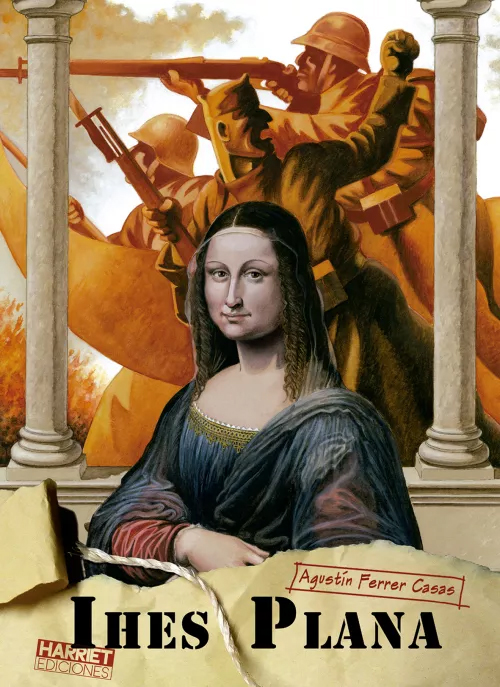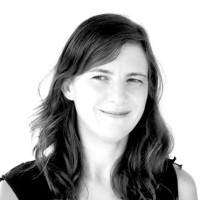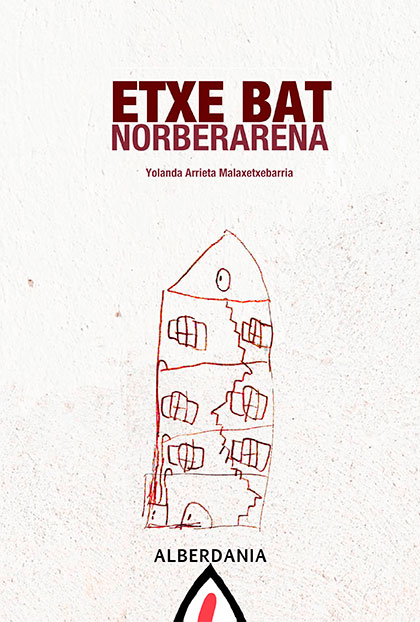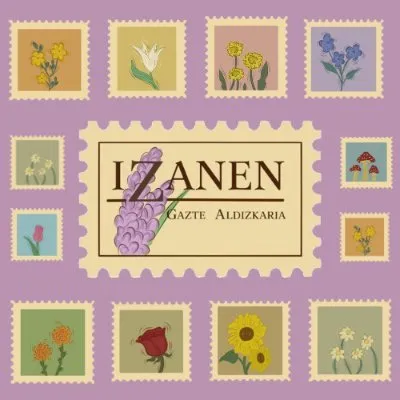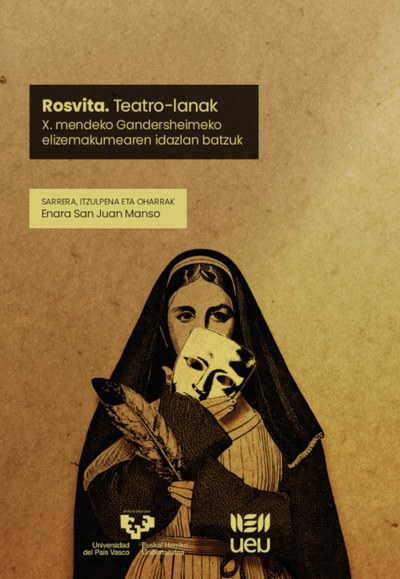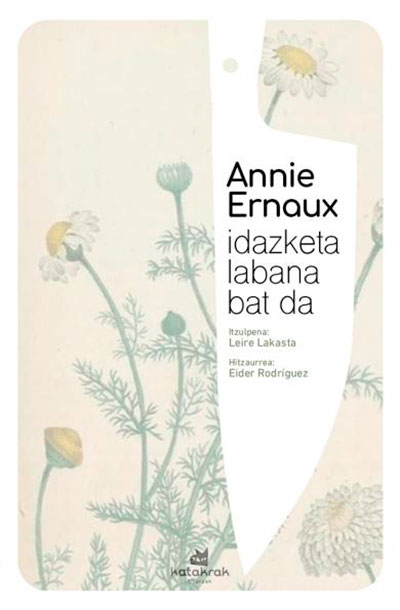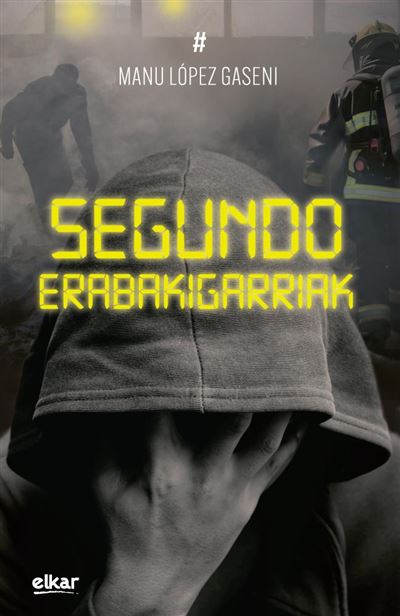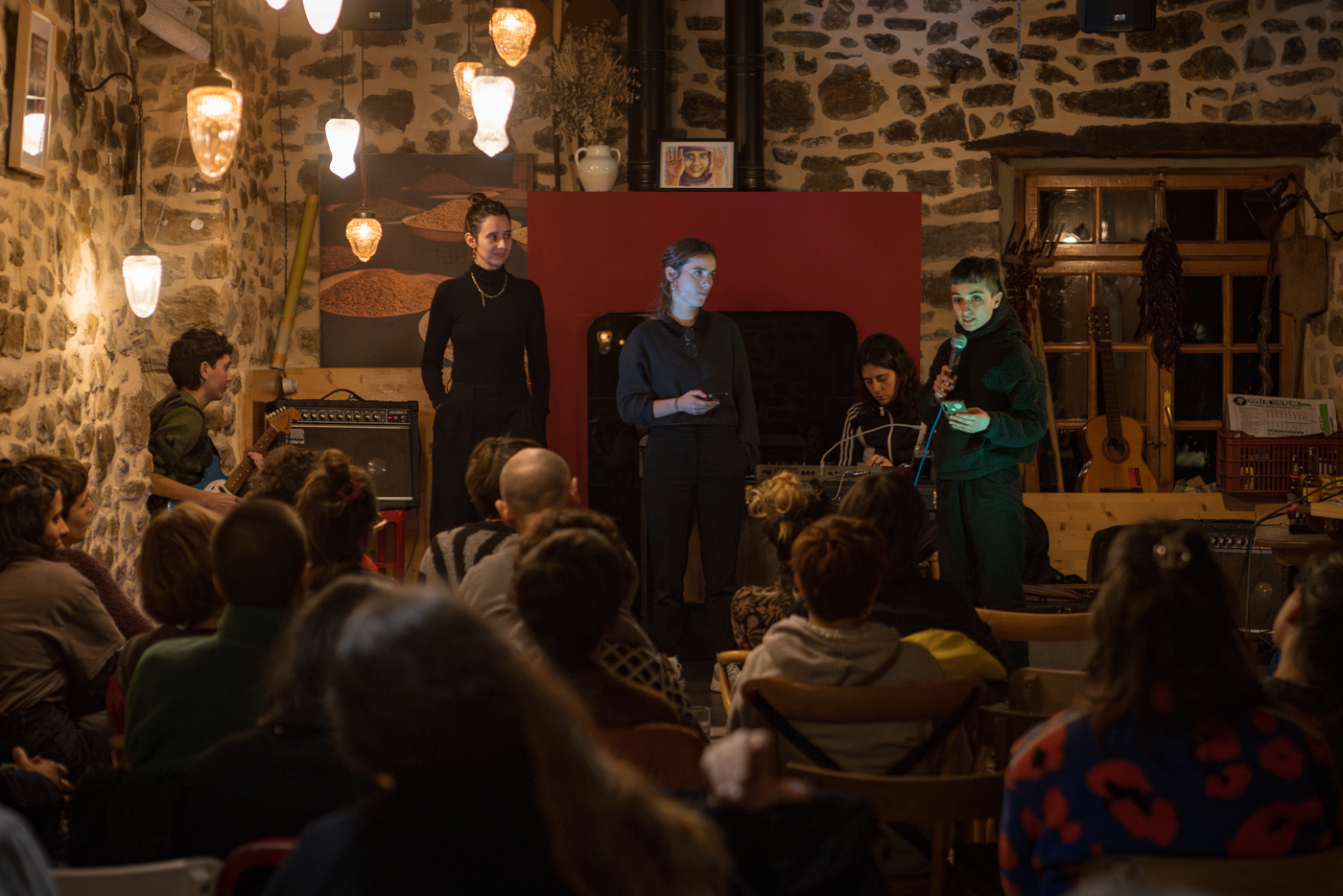"It seems to me a laziness to leave the text as it has gone, without working"
- He moved to the capital of Buenos Aires and it was then that Selva began to write about the atmosphere of the province of Almada: “I realized that I dominated urban literature, that I was not interested in reading or writing.” Since then, 20 years have passed, but the Almada continues to cultivate similar landscapes, as it still finds “edges”.
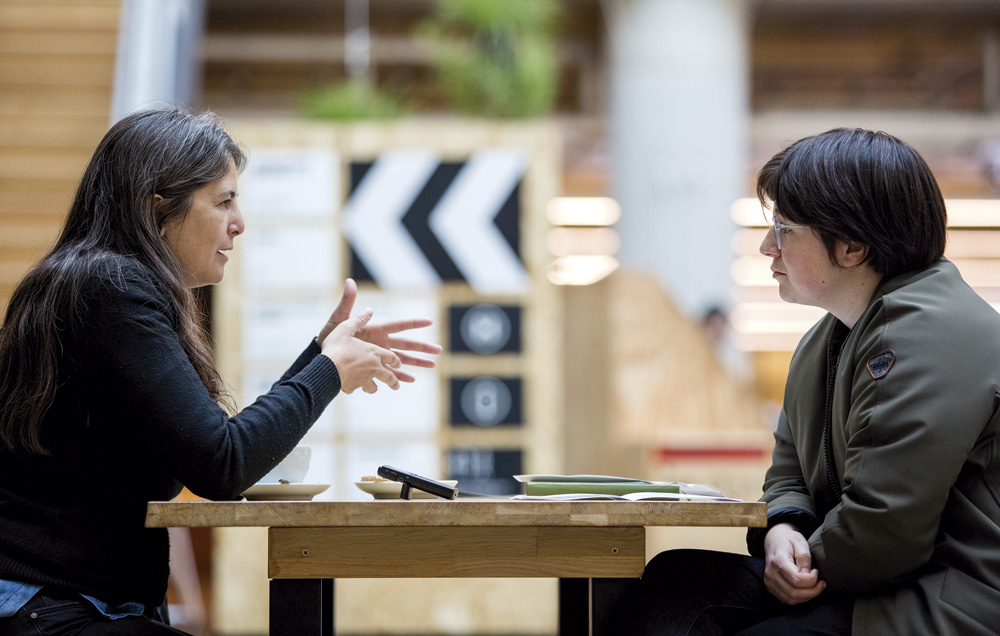
Idazlea da Selva Almada. Poemak, narrazioak, eleberriak eta kronikak argitaratu ditu. El viento que arrasa (2012) eta Ladrilleros (2013) eleberriei esker sona eskuratu zuen nazioartean, eta hainbat hizkuntzara itzuli zituzten haren lanak. Buenos Airesen bizi da, idazketa tailerrak ematen ditu eta Carne Argentina izeneko literatura zikloa antolatzen du.
When did you start writing?
Larger. Some of you know from a young age that you want to be a writer, but I don't; I, when I was a kid, wanted to be a journalist. What's more, paradoxically, when I was studying journalism, I started writing fiction. I went to a writing workshop to release my hand a little bit, where we did all kinds of exercises, especially creativity. I stopped there. I wrote some narratives, and when they published them in a supplement to the city where I was studying [Paraná], I realized that maybe journalism wasn't my way.
And you started to study literature.
Yes, because I was convinced that you had to read a few things to be a writer, even though that idea was a little bit false. But well, it was an amazing experience, because I met people who had just started writing, and some teachers really excited us. Thanks to them we met young writers and it came to me well because, until then, for me the writers had died (Borges, Cortazar), and the few who lived lived lived in Buenos Aires, there was no other option. But thanks to the professors of Paraná I met the writers of the interior who published in the editorials of the interior… That opened my mind: I realized that there was a rich writing in the province, that everything had not to go down the path of the capital and that where I lived there was production.
Precisely in the articles about you and in the counterposition of your books it is frequent to refer to the question of the province. Cultural critique Beatriz Sarlo said his literature is “provincial, regional, but not costumbrista”. What is your attitude towards these kinds of concepts?
When I found a more recent literature that I was writing in the province of Entre Ríos, I saw very interesting things, but the literature that I knew until then and was done in the province was a little costumbrista, quite folkloric, and I didn't really identify much with that. The first narratives I wrote at the University, therefore, were not very related to the province, but were produced in a place a certain distance away. Then I went to Buenos Aires and wrote some narratives about my childhood, so I couldn't go back to those landscapes of my childhood, and I started to discover many edges. Anyway, while I was writing, I wasn't meant to be a costumer. Of course, I didn't identify at all with the stereotypes that usually appear on Buenos Aires television about the provincials, so it was clear that I wasn't going to play out there.
In the landscapes of childhood you place your characters and stories, even if you leave there young. I remember the words of the writer Elena Ferrante, who also left Naples some time ago, but…
Did he leave for a long time, but did he not leave at all?
Yes, more or less. Do you feel something like this?
Although I'm coming back a little bit often, it's true that I've been living in Buenos Aires for 20 years and I do everyday there, so yes, I share that other feeling with Ferrante, it seems to me that I haven't been able to go all the way, and it will be as long as I keep writing about that environment.
On the other hand, this first decade of life is fundamental, and as I grew up in the province, it will be with me forever, for better or for worse, although it will change its place over the years, of course. But there's one thing, like the one that happens with the family: you get angry, you complain, but something ties you, even if you're broken, you always have a trace. In addition to the most emotional, those environments still seem very attractive to me, I still find characters and stories, and I want to keep exploring.
It has not been exhausted…
Not yet. That's also seen in language. I'm very interested in working the languages of those places, not because I want to do sociology and recover how people who live in those places speak, but in a poetic way: pick up the raw material of the beans and flip it poetic. And in that environment, I always find new melodies, expressions and words that are used there, but not in cities.
The protagonist of your first novel, Pearson, a fervent evangelical pastor, tells parishioners to act carefully with beautiful and strong words. You are a writer, what do you think of fine words and strong words?
The truth is that I like both beautiful words and strong words, but I'm not interested in literature that uses just nice words or strong words. I really enjoy working the language, spinning around, and even though my texts contain seemingly very simple phrases, I've surely worked a long time with that phrase, and in the end I've decided that that's the most appropriate expression. I really like to take everyday words and, for example, mix them with other more ridiculous phrases that are considered more literary. So, I like nice words and strong words, the question is how to unite them, how to dose them…

How to balance?
Yes, or how to work it. Dismantling a nice phrase is a job. Realize that yes, it may be a great phrase, but that, contextualized, it doesn't help the text. Then you have to be able to release it (or keep it for another). After all, what does the writer do? Well, in simple terms, the writer cultivates language, cultivates the word, and although it seems obvious, many don't, because in today's literature, that's what's missing, work. It seems to me a laziness to leave the text as it comes out, as many writers do.
He has published a nonfiction book: Dead girls. You've recovered the cases of three girls who were killed in the Argentine province in the 1980s. What concern was there at the origin of the book?
In my adolescence, two similar cases occurred, killing Andrea and María Soledad, the first in my neighboring town and the second in another province, but it spread a lot, because there were children of several governors among them. They were both very present, because somehow I realized, if I was a woman, that there were added risks, that if I was a woman, there were other concerns that didn't affect men. In addition, Andrea was murdered in her own bed, which showed that there was no safe place for women, because on those occasions it was often said, for example, that the girl had gone to a dance, and that that was why it had happened to her, but in this case it was evident that she had not.
Why did you choose these cases and with what intention did you want to bring them back to the plaza after so many years?
I started making the book about ten years ago. At the time there was more and more talk about feminicides, although that word was not yet used. And on TV and among many people, they said that before that didn't happen, that it was a fashion, well, to kill women as if it were fashionable. But whenever I remembered Andrea and María Soledad, I would tell myself that, if it had happened to them, I would surely happen before, but that nobody cared, that it was naturalized. What happens is that you now see it and that influences it. So from that historical point of view, I began to look for the cases of the past that killed Andrea and María Soledad, because I wanted to show that they also happened in the 1980s, that men have not left the street with the new millennium and have begun to kill women.
How did families take the project?
When I approached them, they were thankful, because I was interested in studying these cases, forgotten a long time ago. That was not the case, but at least the fact that their stories had been preserved provided them with some comfort. It was a long process, but fortunately the book came out in an important editorial and has been opened.
He also wrote about the case of Angels Rawson in 2013, a few months after his death.
Yes, the magazine director Anfibia, Cristián Alarcón, knew that I was with the book, and he invited me to write about the case of Angels Rawson, along with another journalist. It was a very media case, you know how the good victims are and the bad victims, because this was the perfect victim. She met all the criteria to feed the morb (a very young girl, “good family”) and was given a morbid and terrible treatment.
In fact, in the introduction of his article it stands out that he dedicated a new look to the event. What expression was that?
I struggled to draw a slightly more humane point of view, to walk carefully, setting aside all those rumours. On TV they continuously showed the recordings of the street security cameras, and there we always saw Angels on their way home. Those images affected me a lot, because we saw him on the screen and we knew that 10 minutes later he was going to be killed. The question of technology gave me a kind of anguish: we're watching the video and if we can go back, if Angels met someone and didn't move forward... but, of course, he never met anybody.
Despite security cameras, he was finally killed.
That's the video that came a little bit later. The video served to clarify the crime, but not to prevent the crime. This really shocked me, and pulling it out, I wrote the article.
Now you're presenting your latest book, a collection of notes about the recording of Lucrecia Martel Zama's film. Martel was here recently and said that the suspicion of reality is a constant of his work, that if we want to analyse reality we must put it in question. How do you work reality in your jobs?
I agree with Martel, I think that the need to question reality is great. My literature is realistic, I mean, it's not produced on Mars and nobody says rabbits by mouth, but that's realism that makes me a little uncomfortable, because both are constructions of reality and literature, so the realism of my books is subjective, according to what I see and think.
I remember one time a commentator said of my books: “He who reads the books of Selva Almada will never go to the province of Entre Ríos, because he tells such terrible things about this environment.” Look, it's a little naive to think that a novel really shows a province. As I say, reality is a construction, and by writing about it, I don't want to offer a kind vision, but a critical one.
Does the writer have a critical look?
Yes, in any case, that is the role of artists: to give a critical view of things. For example, we now have a deplorable government in Argentina, and they're criticizing many artists and body builders, but I was also critical of the previous government, and I think that was more uncomfortable, because I was closer to it in some things, especially in the cult world. Artists need to be critical of the reality of our country, of the institutional power, of the government, although we agree in many ways with that government. I think that is the form… Art is born in discomfort, not in comfort.
Chicas muertas liburua idazten ari zela, tarotista batengana jo zuen Almadak. Aurrez gauza bera egina zuen kazetari txiletar bati hartu zion ideia. “Tarotista hura ez zen edozein, asko irakurritako emakumea zen, oso azkarra eta kontzientzia handikoa. Hizketaldi luzeak egin genituen, oso lagungarriak suertatu zitzaizkidan liburuko hariak antolatzeko. Tarotistari esker konturatu nintzen hiru hilketen artean bazirela zenbait lotura deigarri”.
Ihes plana
Agustín Ferrer Casas
Itzulpena: Miel A. Elustondo
Harriet, 2024
---------------------------------------------------------
1936ko azaroaren 16an Kondor legioko hegazkinek Madrilgo zenbait museori egin zieten eraso. Eta horixe bera da liburu honetara... [+]
Joan den urte hondarrean atera da L'affaire Ange Soleil, le dépeceur d'Aubervilliers (Ange Soleil afera, Aubervilliers-ko puskatzailea) eleberria, Christelle Lozère-k idatzia. Lozère da artearen historiako irakasle bakarra Antilletako... [+]
Martxoaren 17an hasi eta hila bukatu bitartean, Literatura Plazara jaialdia egingo da Oiartzunen. Hirugarren urtez antolatu du egitasmoa 1545 argitaletxeak, bigarrenez bi asteko formatuan. "Literaturak plaza hartzea nahi dugu, partekatzen dugun zaletasuna ageri-agerian... [+]
Etxe bat norberarena
Yolanda Arrieta
Alberdania, 2024
Gogotsu heldu diot irakurketari. Yolanda Arrietaren obra aski ezaguna zait eta iragan maiatzean argitaratu zuen proposamen honetan murgiltzeko tartea izan dut,... [+]
1984an ‘Bizitza Nola Badoan’ lehen poema liburua (Maiatz) argitaratu zuenetik hainbat poema-liburu, narrazio eta eleberri argitaratu ditu Itxaro Borda idazleak. 2024an argitaratu zuen azken lana, ‘Itzalen tektonika’ (SUSA), eta egunero zutabea idazten du... [+]
SCk Zerocalcareri egindako galdera sorta eta honen erantzunak, jarraian.
Euskal Herriko literatura gaztearen eta idazle hauen topagune bilakatu nahi den proiektu berriaren inguruan hitz egingo dugu gaur.
Rosvita. Teatro-lanak
Enara San Juan Manso
UEU / EHU, 2024
Enara San Juanek UEUrekin latinetik euskarara ekarri ditu X. mendeko moja alemana zen Rosvitaren teatro-lanak. Gandersheimeko abadian bizi zen idazlea zen... [+]
Idazketa labana bat da
Annie Ernaux
Itzulpena: Leire Lakasta
Katakrak, 2024
Decisive seconds
Manu López Gaseni
Beste, 2024
--------------------------------------------------
You start reading this short novel and you feel trapped, and in that it has to do with the intense and fast pace set by the writer. In the first ten pages we will find out... [+]
Istorioetan murgildu eta munduak eraikitzea gustuko du Iosune de Goñi García argazkilari, idazle eta itzultzaileak (Burlata, Nafarroa, 1993). Zaurietatik, gorputzetik eta minetik sortzen du askotan. Desgaitua eta gaixo kronikoa da, eta artea erabiltzen du... [+]
When the dragon swallowed the
sun Aksinja Kermauner
Alberdania, 2024
-------------------------------------------------------
Dozens of books have been written by Slovenian writer Aksinja Kermauner. This is the first published in Basque, translated by Patxi Zubizarreta... [+]











